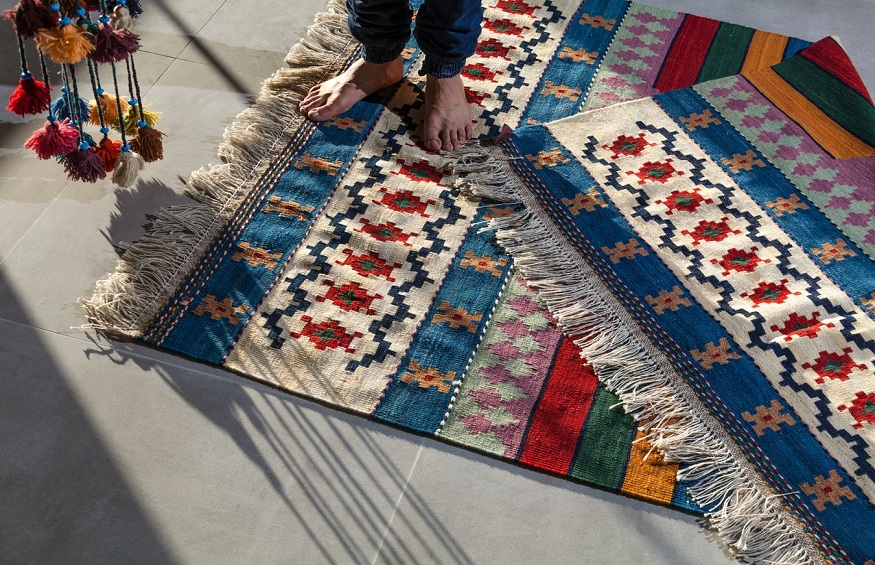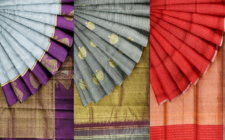There are many rugs on the market. There are many different ways to make rugs and as many materials available. The construction and materials that work best in your home depend on the use of the rug and the style you prefer.
We’ll show you the most popular types of custom logo rugs, rug weavings, rug materials, as well as what to look out for when shopping for your next rug.
Types Handmade Rugs
Handmade rugs can be superior to other types of rugs in terms of durability and quality. Even handmade rugs can vary in quality. Both hand-knotted and handmade rugs are hand-tufted, but the enthusiasts are aware that they are different products.
Hand-Knotted Rugs
If you think of heirloom Persian rugs or Oriental rugs you might be thinking hand-knotted. These rugs have been handcrafted by artisans who use techniques that go back thousands of years. The process involves the tying of yarn onto the warp to create the rug’s structure.
The finest hand-knotted rugs are made with hundreds of individual stitches per square inch. This can take up to months and be very expensive. These rugs are true works of art. This level of artistry comes at a cost. A hand-knotted rug can often be expensive. They can be an investment piece, which is not so bad. If they are properly cared for, they can live for many decades. Many of them even increase in value over time.
Hand-Tufted Rugs
Hand-tufted rugs start with a premade backing material, such as canvas or jute, and are not like hand-knotted, which is where the rug’s structure is constructed as it goes. This backing material usually has the rug’s design printed on it. A worker then can use a hand-held needle tufting tool to push the yarn through the backing while following the pattern. These yarns can then be held in place using a piece of fabric and glue. They are less likely to come out because these yarns aren’t integrated into the rug structure as well as the knots in a hand-knotted rug. Hand-tufted rugs take less time and are easier to make than handcrafted rugs. Although these rugs are more susceptible to wear than hand-knotted, they are also far less expensive.
Machine-Made Rugs
Some people give machine-made or powered-loomed rugs a bad name. While machine-made rug quality is not always as good as hand-made, technology has advanced to the point that high-quality machine-made carpets can be purchased at a fraction of the price of handmade rugs.
A machine-made rug can be made using computer-controlled looms. These rugs come in a wide variety of styles and patterns, which is often more precise than what you would get from hand-made rugs. Machine-made rugs are great for those who want modern designs and are budget conscious.
Flatweave Rugs
This article has mainly focused on pile rugs. Rugs that have bits of yarn sticking out of the backing material to form a soft pile. There are also flatweave rugs that you can consider. Flatweave rugs don’t have piles. Instead, the entire construction is comprised of the warp and weft. These rugs are extremely durable, easy to clean, and very wear-resistant, making them great for high-traffic areas. The synthetic flatweaves can be used outdoors, as well. Kilims, a handcrafted flatweave like Kilims, is also very popular for their tribal designs
Rug Materials
It is just one aspect of the story about how a rug was made. You need to know the origin of your rug before you buy it. Some materials are more appropriate than others depending on the purpose of your rug.
Wool Rugs
The traditional material for rug making is wool. It’s not hard to see why. Wool is soft, strong, and dyes beautifully. Hand-knotted Persian rugs and Oriental rugs are made of wool. Wool rugs are more expensive than other materials, but quality comes with a price. When buying a rug for high-traffic areas of your home, this is something you should remember. Although wool is extremely durable and can be cleaned easily, it should not be placed in an area where it will come into contact with muddy shoes.
Synthetic Rugs
The most popular synthetic materials for making rugs are polypropylene, polyester, and other synthetics. These synthetics may not be as good as wool in every way, but technological advancements have made them very close. Modern synthetic fibers are soft and durable and can be purchased in a variety of textures at a fraction of what wool costs.




